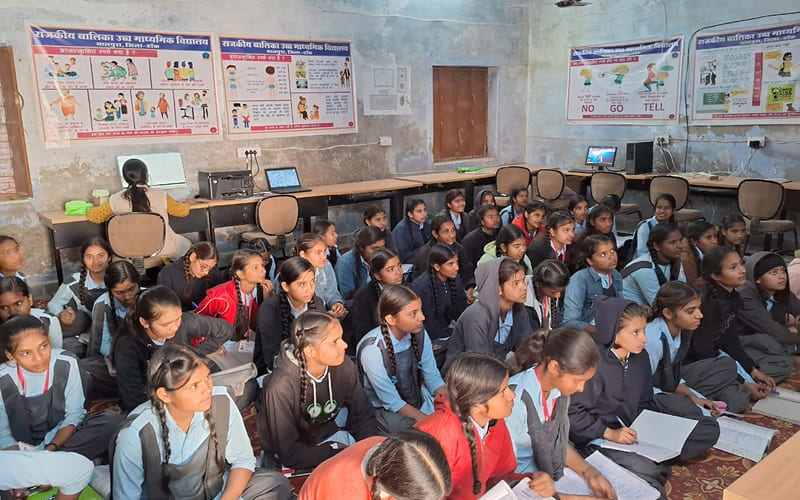
Generating Green Hydrogen from Biomass: A Sustainable Solution for India's Energy Future
At IISc, Professor S Dasappa has developed a groundbreaking technology to produce green hydrogen from biomass. Offering a cleaner and more efficient alternative to conventional methods, this innovation could dramatically cut carbon emissions and reshape India’s renewable energy landscape.
Updated on: 19 June 2025
Impact Metrics
100 G of hydrogen
from 1 KG of biomass, surpassing assumed maximum of 60 G.
The traditional method of producing hydrogen involves steam-methane reforming, a process that is both energy-intensive and environmentally taxing due to its high carbon emissions. In contrast, Professor Dasappa’s innovation leverages biomass, a renewable energy source, to generate hydrogen through a two-step reaction process.
This method is not only more efficient but also significantly reduces the carbon footprint associated with hydrogen production. The first step of the process yields a hydrogen-rich fuel gas mixture, while the second step involves a low-pressure gas separation unit to produce pure hydrogen. Remarkably, this technology can extract 100 grams of hydrogen from just 1 kilogram of biomass, surpassing the theoretical maximum of 60 grams.
Fueling India’s net-zero ambition

India’s commitment to sustainable energy is underscored by its national policies, such as the Atmanirbhar Bharat initiative, which emphasizes self-reliance and sustainability. According to NITI Aayog, India’s hydrogen demand is expected to quadruple by 2050, accounting for nearly 10% of global demand. The adoption of green hydrogen technologies like the one developed by IISc is projected to reduce CO2 emissions by 3.6 gigatonnes cumulatively from 2020 to 2050. This innovation not only supports India’s green energy targets but also positions the country as a leader in sustainable hydrogen production.
The potential applications of this technology extend beyond energy production. Professor Dasappa envisions its use in decarbonizing the steel industry and manufacturing green fertilizers, which are critical for sustainable agriculture. Additionally, the technology can be adapted for the production of methanol and ethanol, further broadening its industrial relevance. The project has garnered support from the Ministry of New and Renewable Energy and the Department of Science and Technology, highlighting its strategic importance. The Indian Oil Corporation Limited is also involved in scaling up the technology to produce 0.25 tonnes of hydrogen per day, which will be used in hydrogen-powered fuel cell buses, demonstrating a practical application of this innovation.
From lab bench to local villages
The success of this technology at IISc sets a precedent for similar initiatives across India. By utilizing locally available biomass, this method can be replicated in various regions, promoting decentralized hydrogen production and reducing dependency on fossil fuels. The scalability of this technology is further enhanced by its adaptability to different industrial processes, making it a versatile solution for India’s diverse energy needs.
Professor Dasappa’s innovation represents a significant leap forward in India’s pursuit of sustainable energy solutions. By harnessing the potential of biomass to produce green hydrogen, this technology not only addresses the growing energy demand but also contributes to global efforts to combat climate change. As India continues to advance its green energy agenda, innovations like this will be instrumental in achieving a cleaner, more sustainable future.
Share Your Story Today, Shape Viksit Bharat Tomorrow
Got an idea, innovation, or experience that's making a difference? Share your story now and ignite India's transformation because your voice can drive the future forward!
BUILD YOUR OWN
BUILD YOUR OWN
How can I implement this innovation effectively?
How is this innovation being adopted around the world?
Where else could this innovation make an impact?
Who has seen real results from using this innovation?
What insights do experts share about this innovation?
What policies support or influence this innovation?
How could this innovation evolve in the future?
Is this innovation accessible and inclusive for everyone?
How can I contribute to or participate in this innovation?
What resources can help me explore this innovation further?
Handpicked stories tailored just for you
Explore stories that inspire, inform, and ignite new ideas across tech, innovation, and real-world impact


Tele-ICU Technology Revolutionizes Critical Care Access Across India
Bengaluru-based Cloudphysician is transforming ICU care with its Tele-ICU platform, connecting hospitals to remote intensive care experts 24/7. Co-founded by...
Read More





